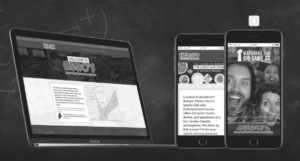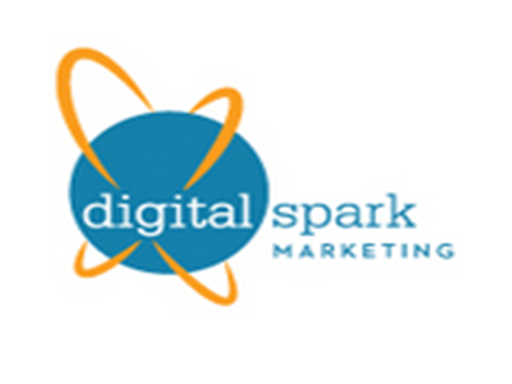What do my customers want? The savviest executives are asking this question more frequently than ever, and rightly so. Leading companies understand that they are in the customer experience business, and why it is the pulse of marketing. They understand that how an organization delivers for customers is beginning to be as important as what it delivers.

Your boss wants you to retain more. Your coworkers want you to do more. Your customers want you to care more.
So what’s your game plan?
If you don’t have one, don’t panic. While being able to deliver more of everything might not sound feasible given your current workload — you have customers to support, after all — it’s much easier to do when you have a clear customer experience strategy in place.
What Is a Customer Experience Strategy?
If customer experience (CX) refers to the sum of every interaction a customer has with a business, both pre- and post-sale, the customer experience strategydefines the actionable plans in place to deliver a positive, meaningful experience across those interactions.
A successful customer experience strategy should take into account a number of important factors, including, but not limited to:
When defining your customer experience strategy, you want to ensure that you’re including all departments, not just the folks in customer-facing roles.
By incorporating feedback and insight across the company, you’ll find it’s easier to align the organization around the intended goal: improving the customer experience and relationship.
Observe: Understand the interaction through the customer’s eyes
Technology has handed customers unprecedented power to dictate the rules in purchasing goods and services. Three-quarters of them, research finds, expect “now” service within five minutes of making contact online. A similar share want a simple experience, use comparison apps when they shop, and put as much trust in online reviews as in personal recommendations.

Increasingly, customers expect from all players the same kind of immediacy, personalization, and convenience that they receive from leading practitioners such as Google and Amazon.
Central to connecting better with customers is putting in place several building blocks of a comprehensive improvement in customer experience.
Identify and understand the customer’s journey
It means paying attention to the complete, end-to-end experience customers have with a company from their perspective. Too many companies focus on individual interaction touchpoints devoted to billing, onboarding, service calls, and the like.
In contrast, a customer journey spans a progression of touchpoints and has a clearly defined beginning and end.
Armed with advanced analytics, customer-experience leaders gain rapid insights to build customer loyalty, make employees happier, achieve revenue gains.
But it takes patience and guts to train an organization to see the world through the customer’s eyes and to redesign functions to create value in a customer-centric way. The management task begins with considering the customer—not the organization—at the center of the exercise.
Pulse of Marketing … Quantify what matters to your customers
Customers hold companies to high standards for product quality, service performance, and price. How can companies determine which of these factors are the most critical to the customer segments they serve? Which generate the highest economic value?
In most companies, there are a handful of critical customer journeys. Understanding them, customer segment by customer segment, helps a business to maintain focus, have a positive impact on customer satisfaction, and begin the process of redesigning functions around customer needs.
Analytical tools and big data sources from operations and finance can help organizations parse the factors driving what customers say satisfies them and also the actual customer behavior that creates economic value.
The advantage of focusing on journeys is twofoldPlay Video
First, even if employees execute well on individual touchpoint interactions, the overall experience can still disappoint. More important, research finds that customer journeys are significantly more strongly correlated with business outcomes than are touchpoints.

Pulse of Marketing … Service Convenience
As customers become more empowered to discover solutions and information on their own via the internet and social media, the demand for increased service convenience grows. For businesses to remain in good standing with customers, they must prioritize start-to-finish online support.
Think about it: If a customer has a question on the weekend, do they have to wait until Monday to reach out? Or do you have a 24/7 live chat feature enabled to meet their Saturday needs?
Something as simple as having a polished, up-to-date knowledge base on your website is a best practice that provides customers with the ability to help themselves without having to reach out for help.
Define a clear customer-experience aspiration and common purpose
In large, distributed organizations, a distinctive customer experience depends on a collective sense of conviction and purpose to serve the customer’s true needs. This purpose must be made clear to every employee through a simple, crisp statement of intent: a shared vision and aspiration that’s authentic and consistent with a company’s brand-value proposition.
The most recognizable example of such a shared vision might be the common objective of the Walt Disney Company: “We create happiness by providing the finest in entertainment for people of all ages, everywhere.”
The statement of purpose should then be translated into a set of simple principles or standards to guide behavior all the way down to the front line. Play Video.
Customer journeys are the framework that allows a company to organize itself and mobilize employees to deliver value to customers consistently, in line with its purpose. The journey construct can help align employees around customer needs, despite functional boundaries.
Pulse of Marketing … Simplicity & Ease of Use
Ever land on a website that was a disaster to navigate on mobile? We’re willing to be you didn’t stick around for very long.
Back in 2015, mobile internet use passed out desktop use for the very first time. Since then, mobile usage continues to grow, making mobile optimization a high priority for businesses looking to provide a simple and seamless experience for customers and potential buyers.
In an effort to amp up your businesses’ ease of use, you’ll want to focus on simplifying website navigation for all browsing types. After all, you can’t expect customers to wait until they get to a desktop to uncover the information they need, right?
A great example to reference here is Amazon. Amazon embodies simplicity and ease of use in their checkout process by enabling Amazon Prime members to buy an item with just one click:
Shape: Redesign the business from the customer back
Customer-experience leaders start with a differentiating purpose and focus on improving the most important customer journey first—whether it be opening a bank account, returning a pair of shoes, installing cable television, or even updating address and account information. Then they improve the steps that make up that journey.
To manage expectations, they design supporting processes with customer psychology in mind. They transform their digital profile to remove pain points in interactions, and to set in motion the culture of continuous innovation needed to make more fundamental organizational transformations.
Mapping the Customer Experience
Once you fully understand your customer you’re ready to start mapping out the customer journey. This is when you get into the customer’s mind as they’re interacting with your product/service.
Focusing Challenge
Before you set up a customer project, you need to align your stakeholders on the primary intent., so you can clearly define the set boundaries to explore. This enables you to focus your team’s thinking to drive the right action. It removes any assumptions within a project statement to guide clear direction.
To set up a customer project or initiative, you need to spend time understanding and defining your customer challenge. A focusing challenge will help you to clearly define your future state vision or challenge and communicate the intent across the business. Use this formula: (Who) can (do what) so that (why: the outcome).
Customer Journey Mapping Mapping
A Customer Journey Map is a design tool that provides a view of the end-to-end experience of your customers. It is a way of visually illustrating customers’ processes, needs & perceptions throughout their interaction and relationship with your organization.
The Customer Journey Map outlines customer needs, pain points, opportunities and different interaction points which accumulate to build a comprehensive “journey” based on their experiences.
To create a customer journey map, pick a persona and map out the key steps across the journey. Once you fully map the customer experience, identify pain points and use the 5 Why’s model below to determine the root cause.
Reinvent Customer Journeys Using Digital Technologies
Customers accustomed to the personalization and ease of dealing with digital natives such as Google and Amazon now expect the same kind of service from established players. Research shows that 25 percent of customers will defect after just one bad experience.
Customer-experience leaders can become even better by digitizing the processes behind the most important customer journeys. In these quick efforts, multidisciplinary teams jointly design, test, and iterate high-impact processes and journeys in the field, continually refining and rereleasing them after input from customers.
Such methods help high-performing incumbents to release and scale major, customer-vetted process improvements in less than 20 weeks.
Perform: Align the Organization to Deliver Against Tangible O
As the customer experience becomes a bigger focus of corporate strategy, more and more executives will face the decision to commit their organizations to a broad customer-experience transformation.
The immediate challenge will be how to structure the organization and rollout, as well as figuring out where and how to get started.
Use Customer Journeys to Empower the Front Line
Every leading customer-experience company has motivated employees who embody the customer and brand promise in their interactions with consumers, and are empowered to do the right thing.
Executives at customer-centered companies engage these employees at every level of the organization, working directly with them in retail settings, taking calls, and getting out into the field.
In the early years, for example, Amazon famously staged “all hands on deck” sessions during the year-end holidays, a tradition that lives on in the employee-onboarding experience.
Establish Metrics That Capture Customer Feedback
The key to satisfying customers is not just to measure what happens but also to use the data to drive action throughout the organization.
The type of metric used is less important than the way it is applied.
The ideal customer-experience measurement system puts journeys at the center and connects them to other critical elements such as business outcomes and operational improvements.
The bottom line
Remember one simple thing here: all employees need to view themselves as customer advocates, period. Customer service actions that are remarkable get talked about. And getting talked about in this light is a great thing, right? No question.

Need some help in building better customer trust from your customer experiences? Creative ideas to help grow your customer relationships?
Call today for a FREE consultation or a FREE quote. Learn about some options to scope your job and pay for results.
Call Mike at 607-725-8240.
All you get is what you bring to the fight. And that fight gets better every day you learn and apply new ideas to make your customer experiences better.
When things are not what you want them to be, what’s most important is your next step. Call today.
Test. Learn. Improve. Repeat.
Are you devoting enough energy to improving your continuous learning for yourself and your team?
Mike Schoultz is the founder of Digital Spark Marketing, a digital marketing and customer service agency. With 40 years of business experience, he blogs on topics that relate to improving the performance of your business. Find them on G+, Twitter, and LinkedIn.
Digital Spark Marketing will stretch your thinking and your ability to adapt to change. We also provide some fun and inspiration along the way. Call us for a free quote today. You will be amazed how reasonable we will be.
More reading on customer experience from our Library:
10 Laws of Customer Experience Design
Building a Customer Experience Strategy for Business Success
10 Ways to Employ Customer Experience for Influence
Like this short blog? Follow Digital Spark Marketing on LinkedIn or add us to your circles for 3-4 short, interesting blogs, stories per week.